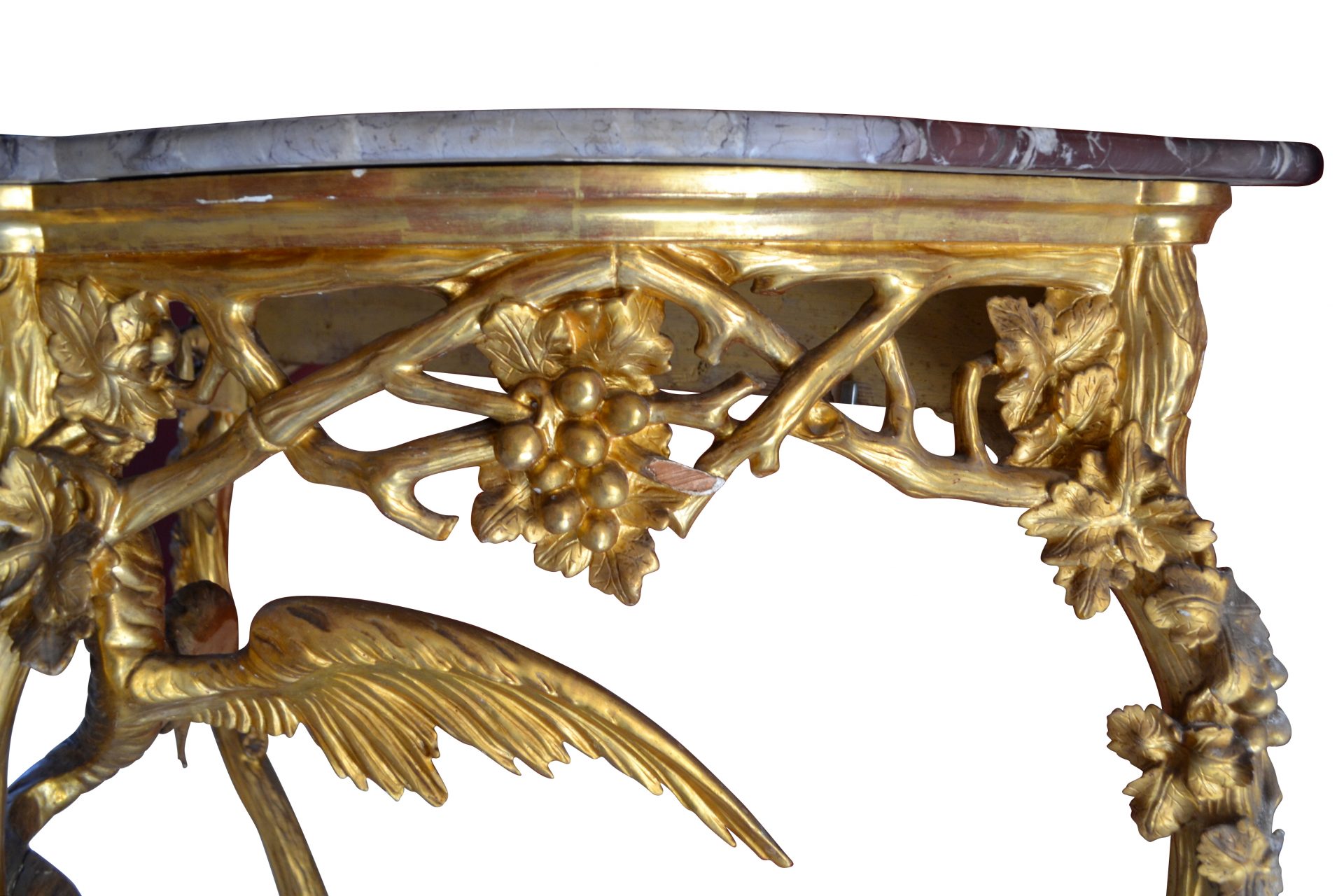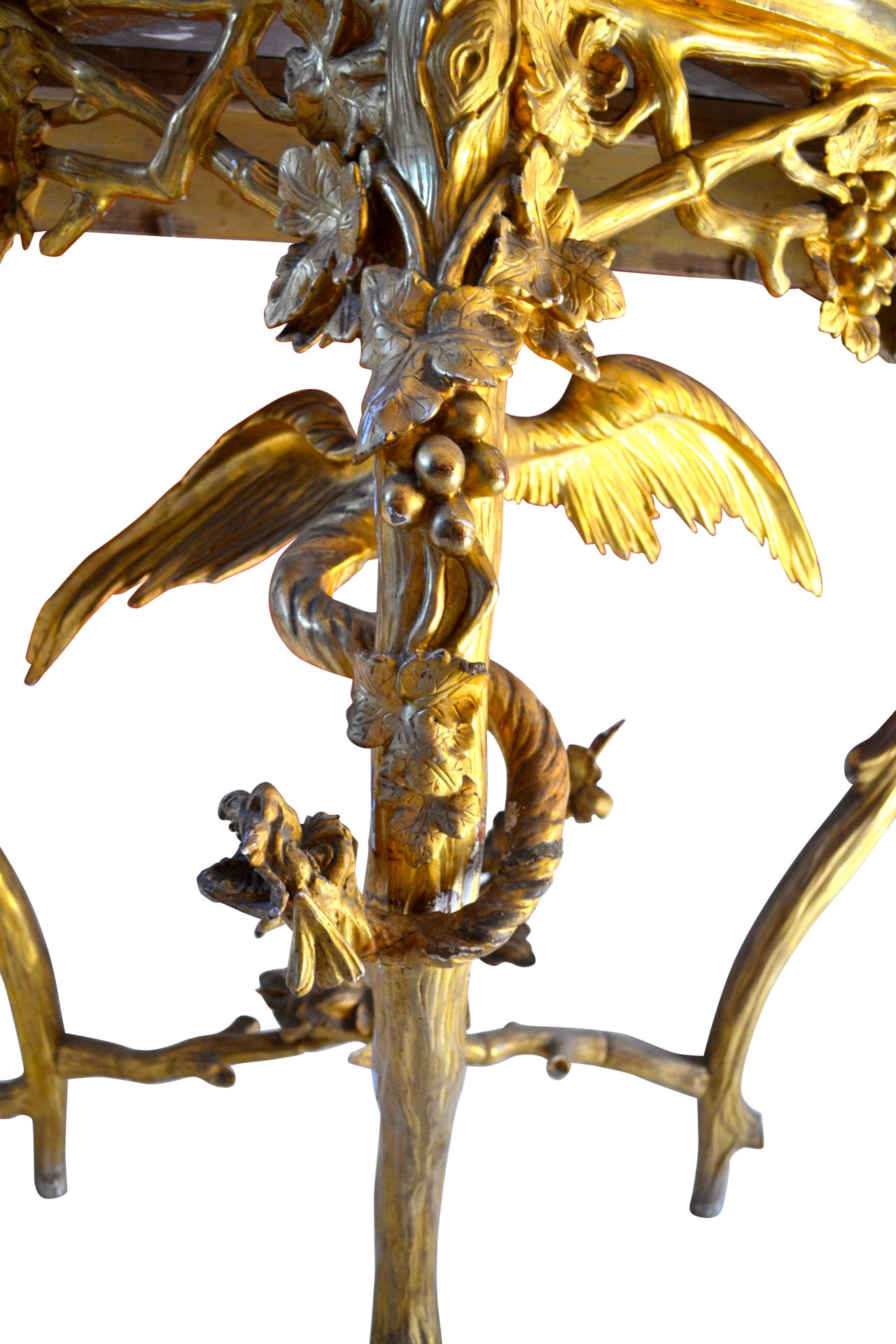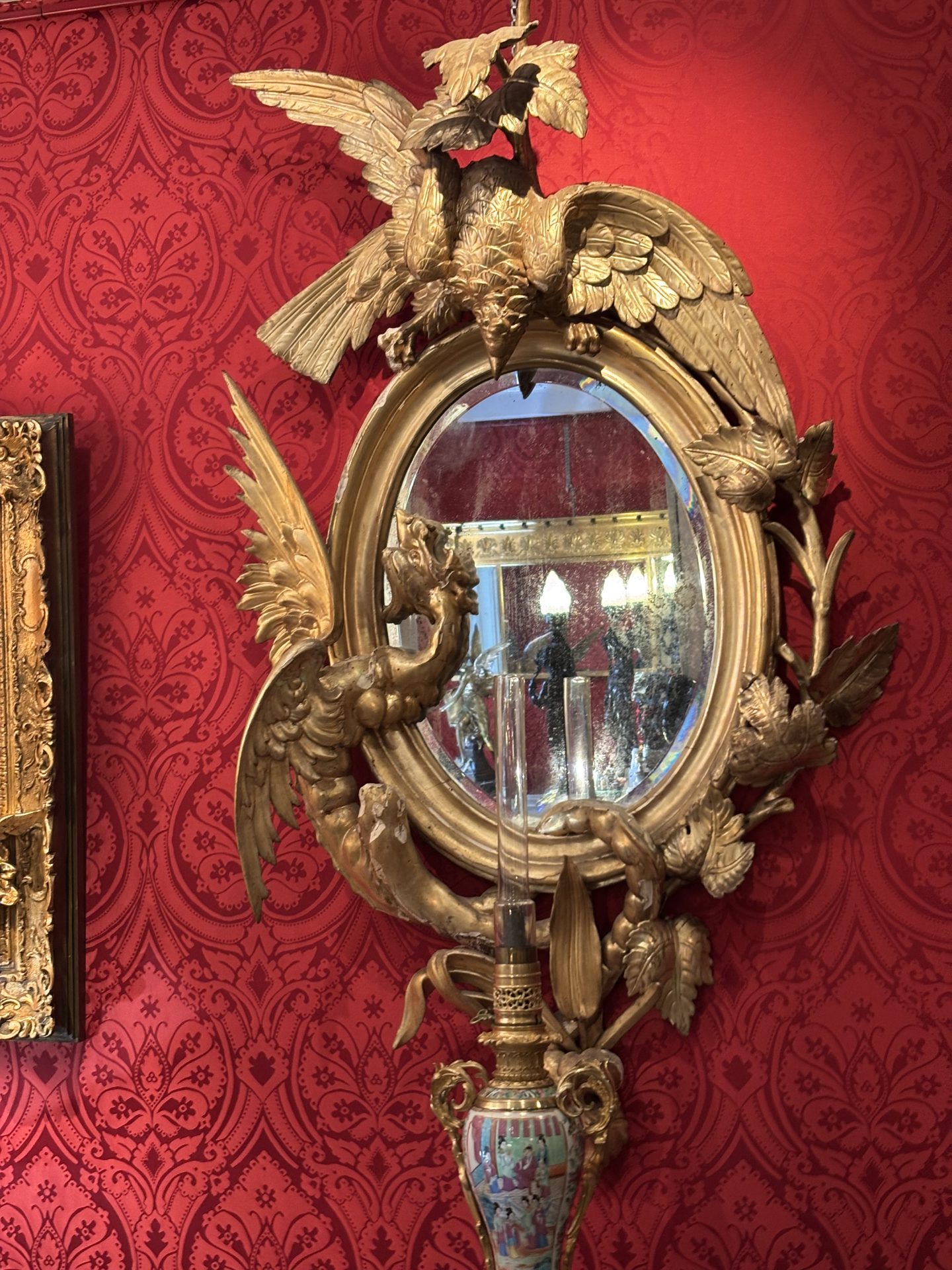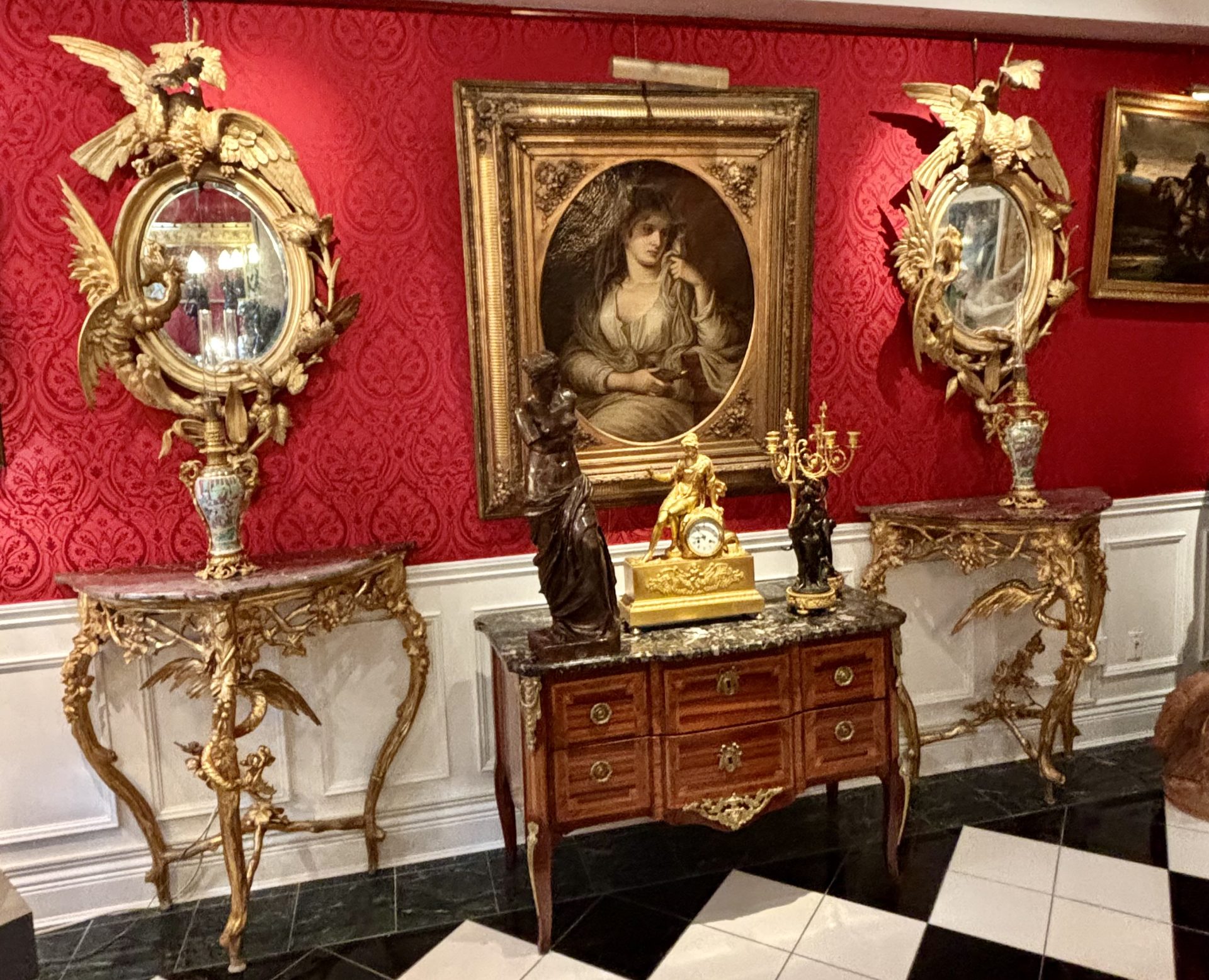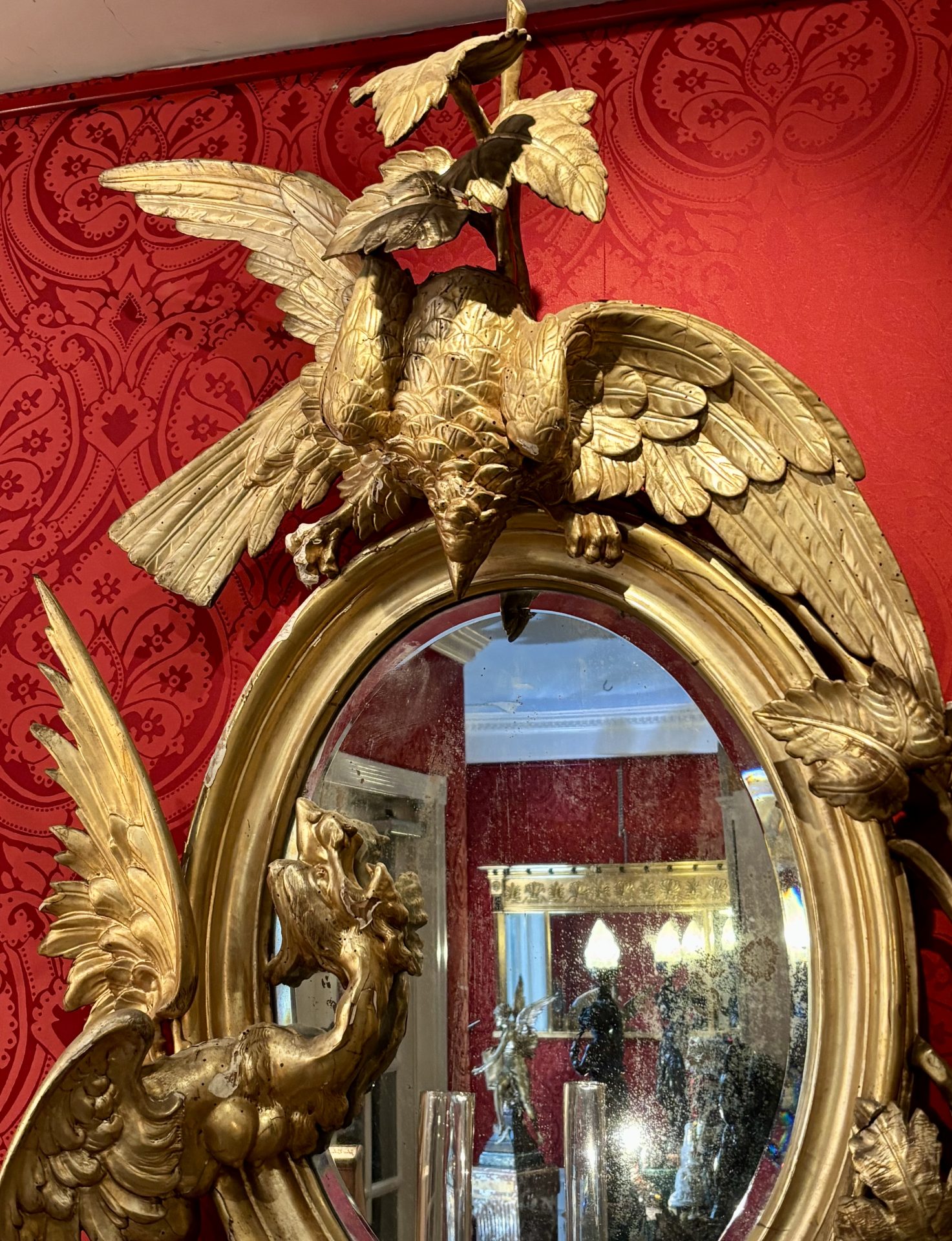Pair of Venetian 18th-19th Century Rococo Dragon and Bird Mirrors and Consoles
$75,000.00
A rare, unique and dramatic pair of Rococo style marble topped giltwood triangular shaped consoles and complimentary slightly elliptical giltwood mirrors. The four pieces are believed to be northern Italian most likely from the Venetian region. The design and carving of the superstructure presented with bunches of grapes, vine leaves, branches and twigs. A winged dragon is shown swirling around and down the central leg of each console. The three legs are joined with a lower stretcher are all presented as vine tree trunks from which germinate more grape leaves and branches. They both have shaped red/grey mottled marble tops. The consoles show more signs of early to mid-18th century Rococo chinoiserie influence.
The mirrors were likely made slightly later in the 19th century but in the same Italian region, and perhaps appear to have a more Japanese influence in their design especially the hawk/eagle leaning over the top of the mirror. The giltwood frames of the mirrors are completely covered with gilded branches and leaves. On the left side of each mirror is a ‘fantastical’ dragon-bird, his huge wings spread out and his long tail clinging around the lower branches. He looks up into the eyes of the top hawk/eagle who appears ready to attack the dragon-bird. The whole is a real virtuoso display of carving and whimsical Rococo design.
Chippendale in England and his contemporaries were some of the first cabinet makers to design furniture in the Rococo style, the term taken from the French ‘Rocaille’ (rockwork), as in fantasy constructions such as grottoes. The style originated in France early in the 18th century when there was a reaction against the weighty classicism of the Baroque style. The consequent taste was for something lighter representing an escape from the stifling, self-conscious grandeurs of the Louis XIV period, as pioneered by designers such as Jean Berain and Pierre Lepautre. The Rococo was characterized by pale bright colours and fluent arabesques. Essentially a style of interior decoration, it consisted of more or less riotous displays of C and S scrolls and curves, created from stylized stretches of foliage, flowers, rocks, shells, and cascades, and often grotesque figures of monkeys, birds and human beings. The style flourished in England, France, and especially Italy (Venice).
Dimensions of Consoles: 20″D x 43″W x 43″H Dimensions of mirror dimensions are 52″H x 30″W x 6″D











